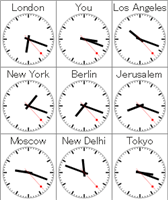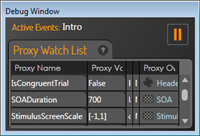Archives
-

Until recently timing in EventIDE, e.g. event durations, was managed with variables of the integer type. It allowed to define a time in experiments with 1-ms precision. Now, with a enhancements in EventIDE clock engine and introduction of a new timing type, clTime, time intervals can be defined and measured with millisecond fractions. This may sound good in a theory but the question is, whether it does work in practice? The following tests are made to answer it.
-

In the July release of EventIDE we added a new debugging tool- the watch window. The watch window allows runtime monitoring and changing the selected proxy variables in a run experiment. The proxy variable in EventIDE is a short-cut reference either to property of a design object or to any global variable, declared in a code. Thus, accessing proxy value at runtime can be very a helpful debugging technique.
-
08 May 2012

Introduction
Recent years have shown an increasing interest in the development of neuro-feedback systems for intracranial EEG experiments and clinical applications. Such systems may, for example, allow stimulus manipulation in response to certain characteristics of the real-time neural signal. They are of great importance for testing the predictions about the functional role of neural oscillations of various frequencies found in EEG signals. In collaboration with the research group of Dr. L.M. Talamini (Brain and Cognition program, University of Amsterdam) we have developed a neurofeedback extension for EventIDE (our stimulus presentation software) that allows designing experiments, where stimulus presentation is accurately locked to a selected phase of the online EEG signal. Below, you can see a demo of EventIDE phase-locked stimulus presentation made over a real EEG recording.
